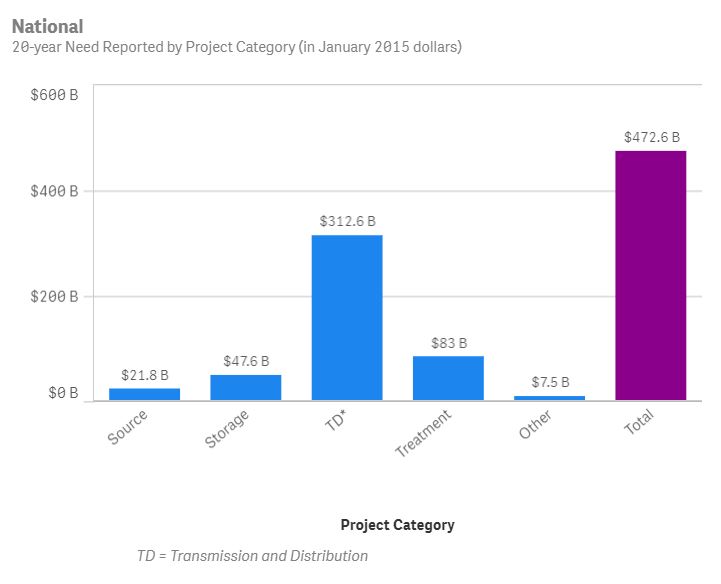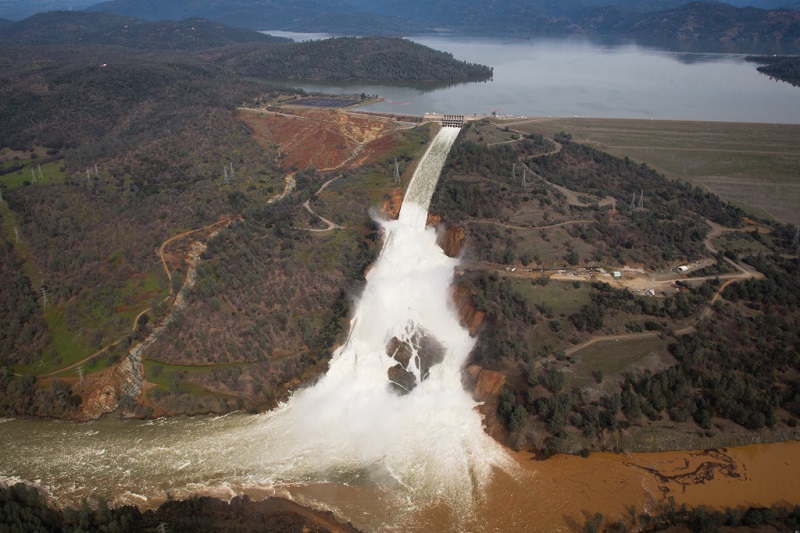The Fourth National Climate Assessment Has Stark Messages on Water. Here’s What it Means for U.S. Businesses.

This November, the US Global Change Research Program (USGCRP) delivered a report to the federal government analyzing the current trends and projected impacts of climate change in the United States.
Chapter 3 of the report focuses on water. It paints a stark picture of the United States’ water future. It asserts that the changing climate presents a significant risk to the nation’s water security, which in turn poses risks to its economic vitality. It supports the adage, “If climate is the shark, water is its teeth.”
The chapter communicates three key messages about the water challenges that the country will face due to climate change. Below, I discuss those messages and what they mean for businesses who have value chains in the United States.
Key Message 1: Changes in Water Quality and Quantity Will Affect Water Supply Reliability
What’s the problem?
The timing, intensity, location, and state (rain versus snow) of precipitation is changing due to warming atmospheric temperatures. We can expect to see greater extremes in water events in the United States, meaning drier, more prolonged droughts and more frequent, more catastrophic storms. This will adversely affect the availability and quality of water for human use and environmental uses.
Figure: Changes in consecutive dry days (left) and annual maximum precipitation (right) for the period 2070-2099 as compared to 1971-2000 under a scenario that assumes rapid reductions in emissions (RCP 2.6) and one that assumes continued emissions increases (RCP 8.5). Source.
What does it mean for business?
High quality, fit-for-purpose water will become scarcer and less reliable for users across the board. Because of this, companies’ impacts on water availability and quality will come under greater scrutiny. As major influencers of the economy, the corporate sector’s responses to droughts and floods will become increasingly important, and increasingly noticed. To manage the physical, reputational, and regulatory risks associated with water quality and quantity changes, companies will need to invest in technologies and management solutions to improve water use efficiency, water quality treatment, and climate resilience.
This is especially true for companies with high-risk supply chains. The agriculture and energy sectors are called out as being particularly at risk for climate-related water impacts. Energy is a critical input for all business operations – 88% of total energy use in the United States goes to commercial, industrial, and transportation end-uses. Agriculture is especially important for the food, beverage, and apparel sectors, and their agricultural supply chains often make up the largest portion of these companies’ overall water footprints. These value chain water risks must be addressed to avoid reverberation throughout the entire enterprise and the economy.
Key Message 2: Deteriorating Water Infrastructure is at Risk
What’s the problem?
Much of the water infrastructure in the United States is outdated and unstable, which compounds the risks of extreme water events discussed above. This infrastructure includes the pipes, canals, dams, and levees that store and convey water, providing water supplies where and when it is needed and protecting communities from floods. It also includes the treatment systems that ensure water is safe to use when it comes out of the tap and is safe to discharge when it flows back to the ocean or river. More extreme events mean higher likelihood of major infrastructure failure, putting communities, ecosystems, and economies in greater danger.
Figure: EPA’s 6th Drinking Water Infrastructure Needs Survey and Assessment shows $472.6 billion is needed to maintain and improve the nation’s drinking water infrastructure over the next 20 years. Source.
What does it mean for business?
Many water supply systems in the United States, particularly in the West, move water great distances to meet demands. These systems, such as the State Water Project in California, are complex and expansive, and they rely on multiple pieces of at-risk infrastructure. Businesses whose operations and supply chains rely on this imported water therefore face higher risks of supply disruption.
The intensity of storms anticipated (and already happening) under a changing climate exceeds the built capacity of most levees, dams, and storm drains. That in combination with the fact that many of those levees, dams, and storm drains are also reaching the end of their useful lives leads to heightened risks of damaging floods, particularly for commercial and industrial facilities in urban areas dominated by pavement (surfaces where water can’t soak in).
Whether a company’s value chains face increased risk of scarcity or floods – or both – due to the compounding effects of climate change and failing infrastructure, they have a strong incentive to invest in local resiliency solutions. Implementing onsite solutions, such as water efficiency, water recycling, and sustainable landscaping can make individual facilities and farms more resilient to extreme events, and is a good place to start. Ultimately, we will need to build resilience at the watershed and community scale, and companies can contribute to that by investing in nature-based resilience solutions such as watershed protection, green infrastructure, and water-wise urban development.
Key Message 3: Water Management Must Adapt to a Changing Future
What’s the problem?
Current water management and planning approaches rarely address risk that changes over time; in other words, we are poorly prepared to deal with variability and uncertainty. The country’s water and climate future is uncertain; we understand the ways in which changes will occur (more intense floods and droughts), but the extent to which these changes will manifest and where and when remains unclear. Scientists have predicted what kinds of changes the country can expect, but current planning and management strategies generally do not address these anticipated changes, nor do they account for uncertainty. The chapter states that “protracted exposure” to water extremes – floods and droughts – due to climate change are not yet incorporated into planning in most sectors (including the federal government), which exacerbates the associated risks.
Photo: Oroville Dam in California, whose spillway ruptured due to heavy flooding in 2017. Source.
What does it mean for business?
The report asserts that the US needs water management strategies “designed in view of an evolving future we can only partially anticipate.” Developing such strategies will require collective action. Good water management across a society and economy requires not only responsible action by the business community but also improved policies and decision-making from the public sector – from local water agencies to state and federal governments. Effective solutions will require public-private partnerships that are built on trust and a shared desired for improved water outcomes, and that leverage the capacities and expertise of a variety of stakeholders.
In order to support and effectively engage in collective action on water, it is important that companies first have their own house in order. Companies that have comprehensive water management plans at both the facility and enterprise levels as the foundation of their water strategy will be well-positioned to positively contribute to water security. These management plans should account for climate impacts, particularly how they are expected to manifest at the local scale. They should set explicit goals across the value chain, and include clear strategies and timelines for achieving those goals. Lastly, the plans and goals should be revisited and updated regularly; an easy way for companies to do this is to update revisit their plans at the same time they prepare their annual disclosures.
What do we do now?
As those steeped in the world of corporate water stewardship know, there are many companies who are already taking action on the water-climate nexus. But there is more that business can and must do to address this issue. In order to achieve a climate-resilient, water-secure economy and society, in the United States and globally, businesses must go beyond tackling the challenges in their own operations and seek to be solutions-providers across their values chains. This happens by sharing knowledge and resources and working collaboratively across sectors.
For companies who are at the beginning of this journey, or who need more resources, there is valuable guidance out there on how water-climate challenges impact business, including specifically in the US, and what businesses can do to make meaningful progress to address the water and climate crisis.
Climate change and the water impacts that stem from it pose an existential threat to our economy and our society. As the introduction to this National Climate Assessment starkly states, “neither global efforts to mitigate the causes of climate change nor regional efforts to adapt to the impacts currently approach the scales needed to avoid substantial damages to the U.S. economy, environment, and human health and well-being…” The pace at which we mitigate and adapt to climate change must accelerate, and business action is a key component of achieving this acceleration.



